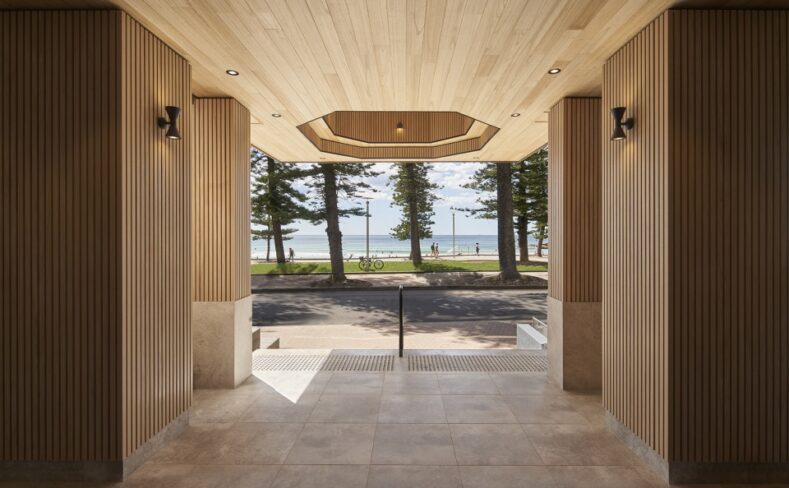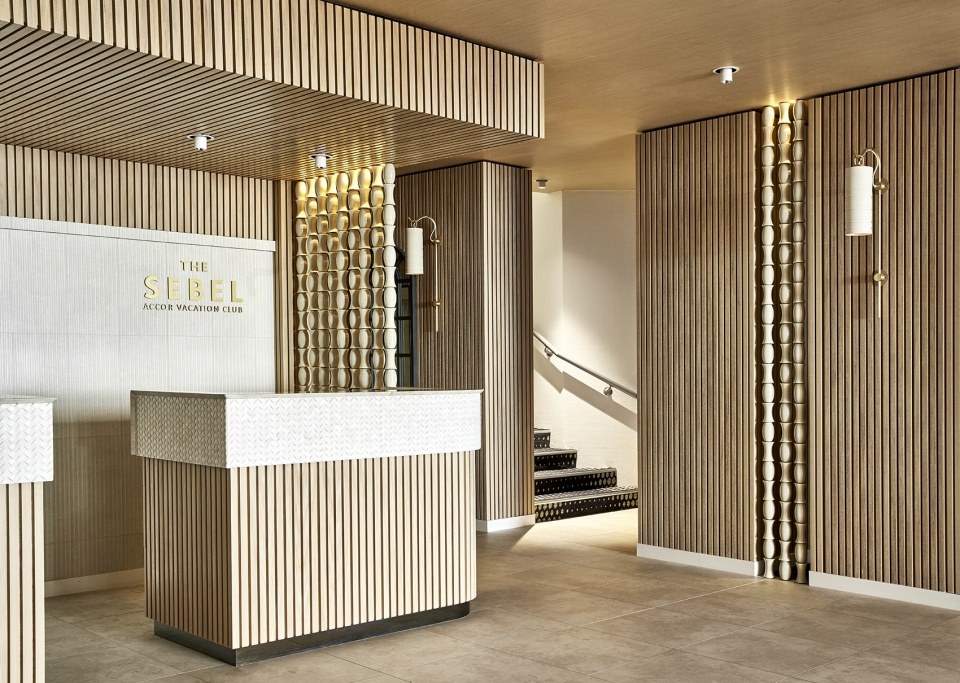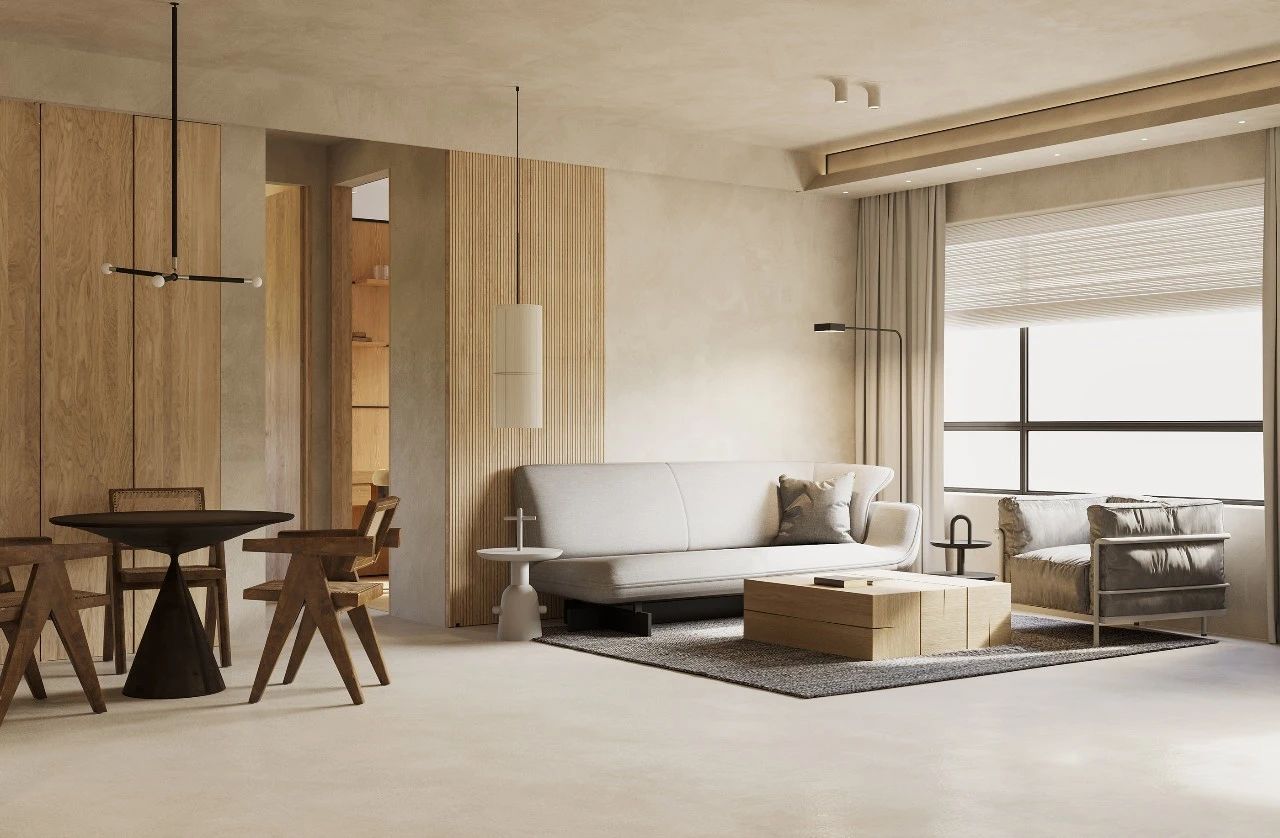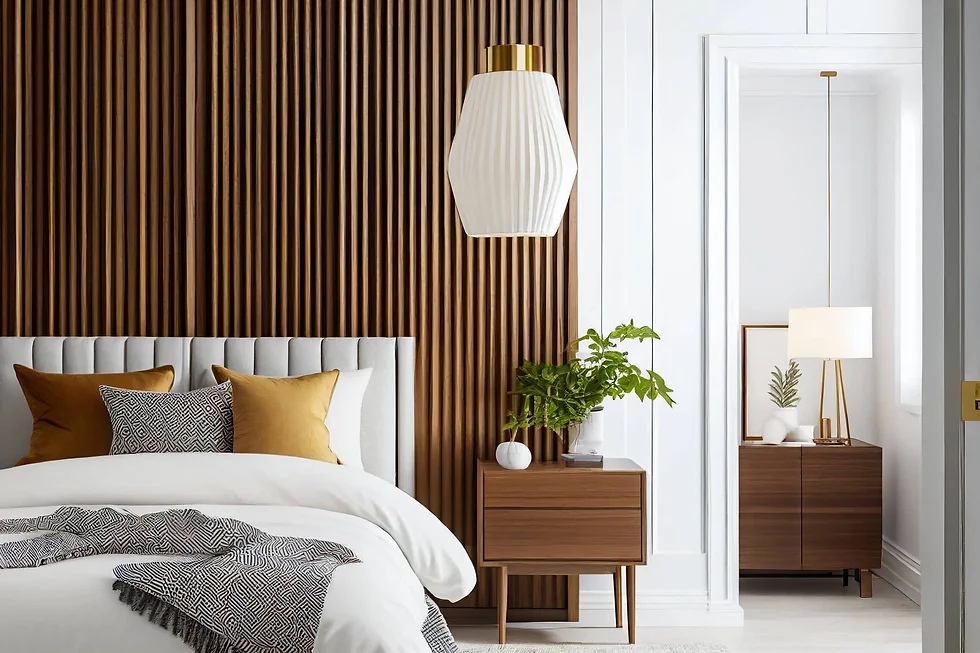
WPC Wall Panel: Blending Elegance, Functionality and Innovation
When talking about modern interior decoration materials, WPC wall panels have undoubtedly become the focus of heated discussions among designers and homeowners. As a revolutionary wood-plastic composite material, WPC wallboard has emerged in the field of interior decoration with its unique advantages and versatility. Not only does it provide an aesthetic appearance, but it also incorporates practicality and environmental protection, making this material stand out in the market.
Related Articles
About the Knowledge of the WPC Wall Panel
Comparison between WPC Ceiling Panel and Traditional Ceiling
How to Choose Suitable WPC Wall Panels?
Have You Heard of This Most Cost-Effective WPC Wall Panel?
I. Introduction of WPC wall panels
WPC wood-plastic wall panel is a new ideal choice of environmentally friendly building materials. WPC wallboard is made of recycled plastic, wood powder, foaming agent and other additives mixed with bamboo fiber. After high temperature and high pressure, it can be used for pallets, packaging boards, door and window frames, decorative boards, etc.
WPC wallboard is a completely renewable material with advantages such as high density, high stability and insulation. The density of wood-plastic composites exceeds 1100kg/m3, which is much higher than most hardwoods. High density can ensure high stability without problems such as protrusions, mildew, bending, and cracking. Using wood-plastic wall panels can make the appearance of buildings look brand new. It has the characteristics of corrosion resistance, long-term outdoor use and no fading.
WPC siding is a renewable energy source, easy to clean and low maintenance. The product conforms to the concept of sustainable development, reusable and simple maintenance, it is a very environmentally friendly building material, and the lightweight material can make your construction work easier. George Panel’s WPC wood-plastic wall panels are easy to transport and install, sawed, planed and drilled, and can be presented in a variety of elegant designs and patterns.
Our WPC wood plastic wall panels can be used in commercial projects or residential use, ideal for decorating or renovating building walls. As an alternative to traditional planks. Our unique manufacturing process combines wood and recycled plastic. WPC siding integrates the traditional look of wood with the durability of composite materials.
Whether in new construction or renovation projects, the use of wood-plastic panel facades can give the building a new look. WPC siding has been standing outside and it has to be very high end quality. WPC is a more ideal wallboard material than metal, glass, stone, PVC. WPC wood plastic wall panels do not require painting or other treatments, saving your time and money.

WPC Wall Panel Applied in the Reception Desk
II. The production process of WPC wall panel
WPC (wood plastic composite) wall panels are composite materials made by mixing wood powder, plastic and other additives, the following is the general manufacturing process of WPC wall panels:
1. Raw material preparation
First, wood powder, plastic and other additives need to be prepared as the main raw materials. Wood powder can come from by-products of wood processing or recycled wood. Plastics usually use polyethylene (PE), polypropylene (PP), etc. Additives may include stabilizers, antioxidants, preservatives, etc.
2. Material mixing
The wood flour, plastic and additives are fed into a mixer or extruder for mixing. In this step, by adjusting the proportion of additives and mixing time, ensure that the wood powder, plastic and additives are fully mixed and even.
3. Extrusion molding
The mixed WPC material is extruded into a wallboard of a specific shape through an extruder. The extruder heats the material to a temperature where it becomes malleable, then squeezes it through a die to create the shape of the wallboard.
4. Cooling and solidification
The extruded WPC wallboard goes through a cooling process to make it solidify and stabilize. During the extrusion process, the shape of the wall panels remains stable.
5. Cutting and shaping
The extruded WPC wall panels are cut to the required length, shaped and trimmed in order to get the final wall panel product.
6. Surface treatment
As required, WPC wall panels can be finished with surface treatments such as printing, embossing or painting to provide different textures and patterns.
7. Packaging and Shipping
Finally, the finished WPC wall panels are packed and ready to be shipped to the market or customers.
It is important to note that the production process of WPC siding may vary depending on the manufacturer and the type of product. Some manufacturers may add other special processes or techniques to enhance the performance and appearance of the siding. Generally speaking, the manufacturing process of WPC wallboard is a relatively complicated process, but through reasonable raw material ratio and production process, high-quality WPC wallboard products can be obtained.

WPC Wall Panel in Living Room Background Wall
III. What are the advantages and disadvantages of WPC wall panels?
WPC stands for Wood Plastic Composite and is a material made from a combination of wood fibers and plastic. WPC siding is made by mixing wood fibers with thermoplastic resins and additives to produce a composite material, which is then extruded into panels. The resulting WPC wall panels are strong, durable, moisture and corrosion resistant, making them ideal for use in high humidity environments such as bathrooms and kitchens.
One of the main advantages of WPC wall panels is that they are environmentally friendly as they are made from recycled materials. Additionally, WPC wall panels are available in a wide range of colours, textures and patterns, offering designers great flexibility in creating unique, stylish interiors.
Advantages of WPC wall panels
1. Beautiful appearance
WPC has the beautiful appearance and excellent texture of wood, but its size is much more stable than that of wood, so it will not produce cracks, deformation and other phenomena. Made from a unique combination of wood and plastic, our WPC wall panels are corrosion resistant. With the real wood feel, the product has a long-lasting wood grain effect and color.
2. Excellent physical performance
Wood-plastic panels not only have a certain hardness, but also have the advantages of anti-skid, wear-resistant, non-cracking, waterproof, anti-corrosion, insulation, thermal insulation and other advantages. The WPC wood-plastic wall panels developed by us have the characteristics of moth resistance and corrosion resistance.
3. High density
Our WPC wood-plastic wall panels are made of high-density polyethylene and solid wood fibers, which have good stability and strength compared to wood. It won’t crack and warp and is suitable for outdoor use.
4. Lightweight and convenient
Lightweight material can make your construction project easier. Our WPC wall panels are easy to transport and install, sawn, planed and drilled in a variety of elegant designs and patterns.
5. Moisture resistance
Unlike traditional building materials, wood-plastic lumber is moisture-resistant. They are an excellent material for kitchen and bathroom cabinets where the chance of moisture retention is high.
6. Anti-termite
Wood-plastic panels are good materials for termite-proof furniture. This is one of the main advantages of WPC wood over natural wood. Furthermore, these boards provide a perfect solution for outdoor applications.
7. Anti-UV
Wood-plastic panels come in a variety of colors. In general, furniture placed outdoors will fade from heat. The WPC board is UV resistant and suitable for outdoor applications. They are widely used to make facades, landscaping items, plant pots and garden furniture.
8. High durability
Durability is one of the fundamental advantages of WPC sheets. They are unaffected by rain, chemicals, humidity and other environmental conditions. They are also very easy to use. The boards can be repaired using conventional tools wherever needed.
9. Good environmental performance
WPC wood plastic wall panels are the ideal choice of environmentally friendly building materials, it is a renewable energy source, easy to clean and low maintenance. The product conforms to the concept of sustainable development, reusable and simple maintenance, which is a very environmentally friendly building material.
Since wood-plastic panels do not contain toxic substances and preservatives, there is no need to worry about the emission of harmful substances such as formaldehyde and benzene, and it will not pollute the environment, and WPC wood is biodegradable. It can be 100% recyclable, with recycled materials such as wood, agricultural products and plastic waste used in the production process. Also, very little waste is generated during the manufacturing process. WPC lumber is also reusable, and most come with a buy-back guarantee.
10. Good processing performance
As we all know, wood-plastic panels can be subjected to secondary processing such as sawing, planing, bonding, and screw fixing, so the construction is very convenient and the application range is wide.
Disadvantages of WPC wall panels
1. There is a gap with authenticity
WPC siding may mimic natural wood, but it’s easily recognizable. Furniture made of wood-plastic panels looks like natural wood, but the finish will not be as high-end. The premium natural wood look cannot be obtained with these boards.
2. Resistance to extreme temperatures
WPC siding has very low resistance to extreme temperatures. Therefore, the application and production of wood-plastic panels have been affected. For example, laser cutters cannot be used to cut panels as they may burn them. Likewise, its application in the kitchen should be well thought out, as very hot utensils cannot be placed on it.
3. Cost
It is well known that the initial cost of WPC siding is higher than other alternative materials.

WPC Wall Panel in Bedroom Background Wall
IV. FAQs
Here are some frequently asked questions and their answers when it comes to WPC (Wood Plastic Composite) siding:
1. What is WPC wall panel?
WPC wallboard is a wood-plastic composite material mixed with wood powder, plastic and additives, which is used to decorate interior walls. It combines the advantages of wood and plastic, and has the characteristics of water resistance, corrosion resistance, and environmental protection.
2. What is the difference between WPC wall panels and solid wood wall panels?
WPC siding is a synthetic material made by mixing wood powder and plastic, while solid wood siding is made of natural solid wood. WPC siding is more resistant to water and corrosion, while solid wood siding may require moisture-proof treatment and more maintenance.
3. Is WPC wall panel environmentally friendly?
Most WPC siding is environmentally friendly as they use reclaimed wood and recycled plastic and produce less waste during production. But be careful, make sure to buy qualified, certified environmentally friendly products.
4. Can WPC wall panels be used outdoors?
Yes, many WPC siding designs are suitable for both indoors and outdoors. The water resistance and corrosion resistance of WPC material make it an ideal choice for use in outdoor environments.
5. How to install WPC wall panels?
Installation methods for WPC siding will vary by manufacturer and type of product. Generally, WPC wall panels can be installed using similar methods to traditional wall panels, such as being fixed to the wall with screws or adhesives.
6. Does WPC wall panel need maintenance?
WPC siding requires less maintenance than other siding. In general, regular cleaning is just a matter of wiping the surface with a damp cloth or mild detergent.
7. How long is the lifespan of WPC wall panels?
The lifespan of WPC wall panels depends on factors such as its quality, installation and maintenance. High-quality WPC wall panels can have a long service life under normal use and maintenance.
8. Is it possible to paint on WPC wall panels?
Most WPC siding does not require painting as they usually already have a water and corrosion resistant finish. If you really want to change the color, you can choose special WPC wall panel paint.
9. Is WPC wall panel easy to clean?
Yes, the surface of WPC wall panels is usually smooth and easy to clean. You can easily wipe away stains and dust with a damp cloth or mild detergent.
10. Is WPC wallboard water resistant?
Yes, WPC wall panels have excellent water resistance, which is one of the reasons why they are widely used in both indoor and outdoor environments.
These frequently asked questions and answers should help you better understand WPC wall panels and their applications. If you have further questions or need more detailed information, please feel free to consult us.
V. Conclusion
WPC wall panel is a popular wall covering material now, which can be used to build beautiful and practical walls. About WPC wall panel, it is also introduced in detail in this article, including characteristics, advantages, disadvantages and common problems. Any ideas Welcome to leave a message in the comment area below.
Quick Quotation



